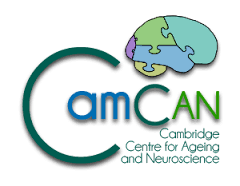CBSU bibliography search
To request a reprint of a CBSU publication, please
click here to send us an email (reprints may not be available for all publications)
The pathological basis of semantic dementia
Authors:
Davies, R.R., HODGES, J.R., Kril, J., PATTERSON, K., Halliday, G. & Xuereb, J.
Reference:
Brain, 128(9), 1985-1995
Year of publication:
2005
CBU number:
6086
Abstract:
Semantic dementia is a syndrome of progressive deterioration in semantic memory (knowledge of objects, people, concepts and words). It falls within the clinical spectrum of fronto-temporal dementia but its pathology has yet to be studied systematically. This study included 18 consecutive post mortem cases meeting clinical criteria for semantic dementia. Clinic records and diagnostic histopathology were available for all cases; structural neuroimaging, neuropsychology and semi-quantitative histopathology/ immunohistochemistry data were analysed where possible. The pathological diagnosis in a clear majority of cases was fronto-temporal degeneration with ubiquitin inclusions (n=13). Eleven of these cases had characteristic motor neuron disease-type inclusions in the dentate gyrus and cerebral cortex. Ubiquitin inclusions were found only in the inferior olivary nucleus in the other two, one of which was the only case to show degeneration of motor tracts and also to have shown evidence of motor neuron disease during life. None of the patients had motor symptoms or signs at presentation. A family history of motor neuron disease was documented in one case. Pick body-positive Pickís disease appeared three times. Finally, two cases had Alzheimerís disease while significant coincidental Alzheimer-type pathology was also found in one of the ubiquitin inclusion cases. One of the Alzheimerís disease patients had changes in white matter signal on scanning whereas all other scans showed cerebral atrophy only. Anterior and inferior temporal regions bore the brunt of the atrophy across all histopathological subtypes. This study confirms that tissue diagnosis in semantic dementia is heterogeneous but largely confined to the pathological spectrum of fronto-temporal degeneration. Alzheimer pathology occurred infrequently. Irrespective of pathological type, the most severely affected regions were the anterior and inferior temporal gyri, implicating this region in semantic processing.

 MRC Cognition and Brain Sciences Unit
MRC Cognition and Brain Sciences Unit

